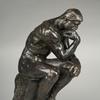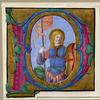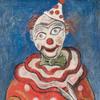From Hopper to Rothko: America’s Road to Modern Art at Potsdam's Museum Barberini
- POTSDAM, Germany
- /
- May 23, 2017
Following its opening exhibition, the Museum Barberini will present its first international cooperation project with the exhibition From Hopper to Rothko: America’s Road to Modern Art from June 17 to October 3, 2017. For this, The Phillips Collection in Washington, D.C., is sending 68 works of early American modern art to Germany for the first time.
American art from the first half of the twentieth century is still relatively unknown in Europe. The three central themes of the exhibition – landscapes, portraits, and cityscapes – present a cross-section of American painting. The show will trace the beginnings of abstract painting, which also developed during this time. After 1945, this culminated in Abstract Expressionism, and New York City became the new center of the art world. Works from The Phillips Collection highlight all of these developments.
The exhibition From Hopper to Rothko: America’s Road to Modern Art will provide a panorama of subjects and styles ranging from Impressionism to Abstract Expressionism – taking visitors on a journey through landscape art, portrait painting, and cityscapes to Color Field Painting, with works along the way by George Inness (1825–1894), Marsden Hartley (1877–1943), Georgia O’Keeffe (1887–1986), Richard Diebenkorn (1922–1993), and more.
With this joint project, Dr. Ortrud Westheider, Director of the Museum Barberini, continues the Museum Barberini’s programmatic approach to showing world-famous works of art in thematic exhibitions. Following her 2009 Hamburg exhibition Modern Life: Edward Hopper and His Time, she now presents the diversity of American modern art in eight thematic galleries. “America’s road to modern art is exemplified by works from The Phillips Collection. This partnership is a great honor for the Museum Barberini.”
Dr. Dorothy M. Kosinski, Director of The Phillips Collection, Washington, D.C.: “We are pleased to send major works from our collection to Potsdam in order to present American modern art to Europe. The newly opened Museum Barberini is an excellent place to showcase these objects.”
Through his activity as a collector, Duncan Phillips (1886–1966), an art critic and patron of the arts, and founder of The Phillips Collection in Washington, D.C., championed and supported America’s modern artists, especially between the world wars, and, thus, helped shape the canon of 20th century American art. The early deaths of his father and brother prompted him to transform the family’s small collection of American art into the seedbed for a museum in their honor in the nation’s capital dedicated to modern art and its sources. Opening in 1921, The Phillips Collection, thus, predated the founding of the Museum of Modern Art (1929) and the Whitney Museum of American Art (1931). Phillips’s view of art as a universal language that transcends national schools and eras endures to this day as an inspiration to others.
The exhibition catalog is being published by Prestel Verlag. Its 248 pages with 200 illustrations can be purchased for € 29.90 at the museum shop and for € 39.95 at regular booksellers. The essays are based on an international conference held on November 21, 2016, at the Museum Barberini. Two essays single out two major works from The Phillips Collection, while others examine the many and diverse links between American art and Europe.
















